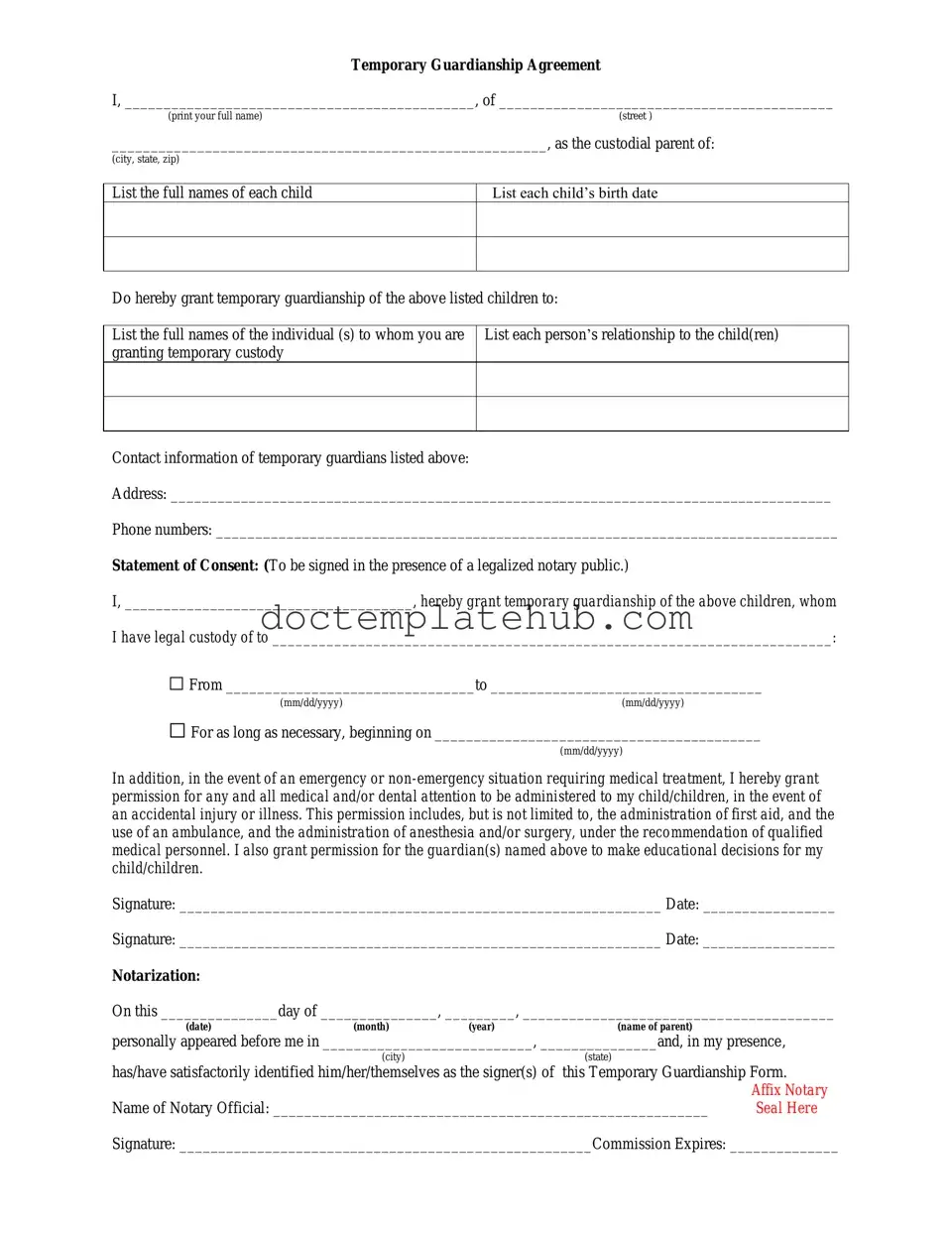What is a Temporary Custody form?
A Temporary Custody form is a legal document used to request temporary custody of a child. This form is typically filed in family court and is meant to establish who will care for the child during a specific period, often while a more permanent custody arrangement is being determined. It outlines the reasons for the request and the proposed living arrangements for the child.
Who can file a Temporary Custody form?
Generally, any adult with a significant relationship to the child can file for temporary custody. This may include parents, grandparents, or other relatives. The court will consider the best interests of the child when deciding who is suitable to have temporary custody.
What information is required on the form?
The form typically requires detailed information about the child, including their name, age, and current living situation. Additionally, the person filing for custody must provide their own information, along with any relevant details about the child’s other parent or guardians. It’s essential to explain why temporary custody is necessary and how it will benefit the child.
How does the court decide on temporary custody?
The court evaluates several factors to determine what arrangement is in the best interest of the child. This may include the child’s emotional and physical needs, the stability of the proposed living situation, and the ability of the caregiver to provide for the child. The court may also consider any existing custody agreements and the wishes of the child, depending on their age.
Is there a fee to file a Temporary Custody form?
Yes, there is usually a filing fee associated with submitting a Temporary Custody form. The amount can vary by jurisdiction. In some cases, individuals may qualify for a fee waiver based on their financial situation. It’s advisable to check with the local court for specific fee information and waiver options.
What happens after the form is filed?
Once the Temporary Custody form is filed, the court will schedule a hearing. Both parties involved will have the opportunity to present their case. The judge will review the evidence and arguments before making a decision. If temporary custody is granted, the court will issue an order outlining the terms of custody.
Can the Temporary Custody order be modified?
Yes, a Temporary Custody order can be modified if circumstances change. If either party believes that a change is necessary, they can file a motion with the court to request a modification. The court will then evaluate the new circumstances and determine if a change in custody is warranted.
How long does temporary custody last?
The duration of temporary custody varies based on the specifics of the case and the court’s ruling. Typically, it lasts until a final custody arrangement is established or until the court determines that the temporary order should be extended or modified. It’s important to adhere to the terms set by the court during this period.
